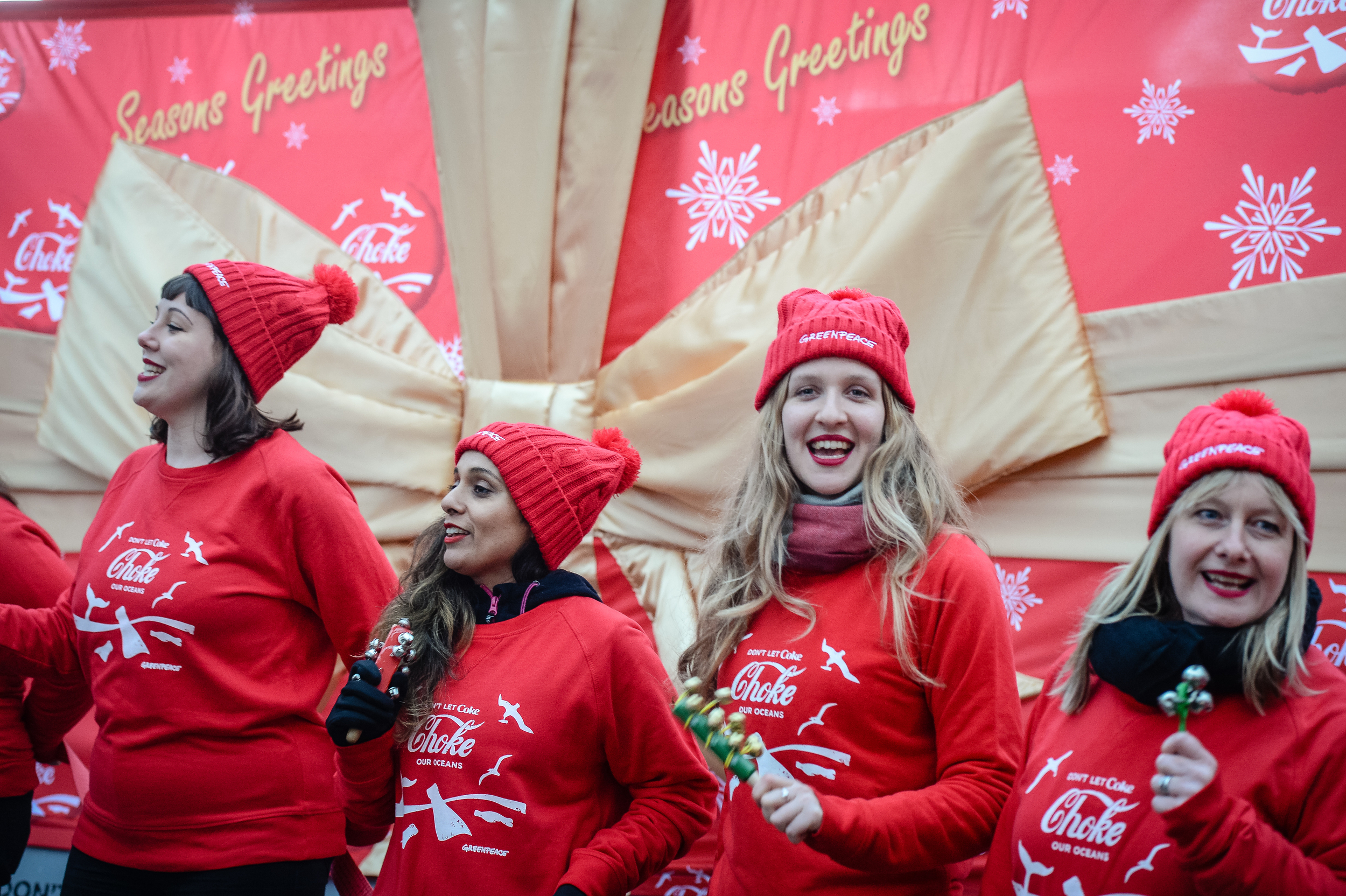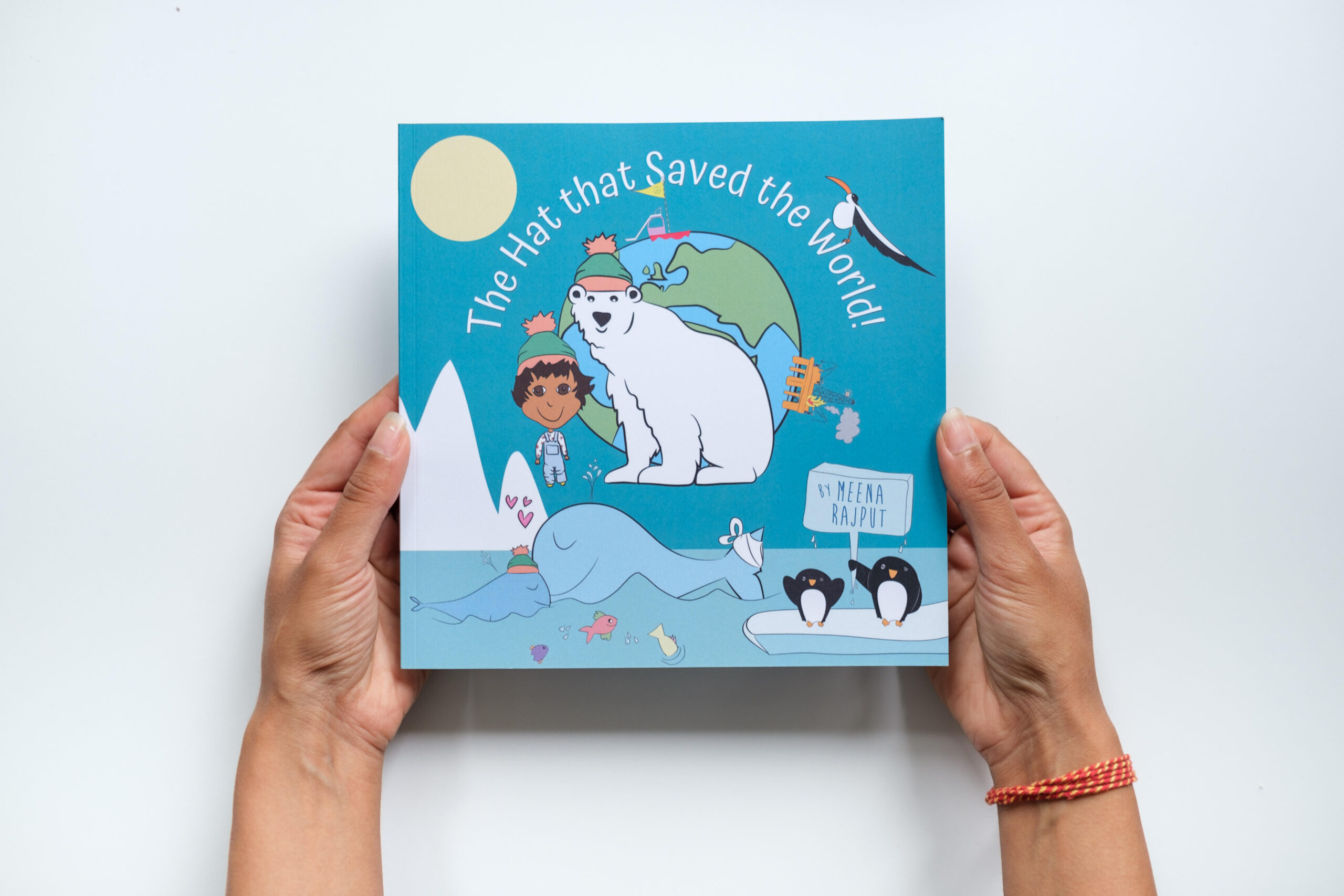As a child, I remember feeling lost in the playground. Lost at home. Lost without role models that I could relate to. Role models who looked like me, sounded like me, and with shared values like mine. Role models who helped me to realise my dreams. Role models that made me think, ‘Yeah! That’s what I want to do too!’ Eventually, any hopes and dreams of my imagined future fizzled away.
Don’t be sad. My imagined future was somehow replaced by an incredible career that involved snowboarding and surfing around the world. I had access to opportunities that no one in my family had ever had, and I was able to share these opportunities with them.
But after 15 years of witnessing how companies drive excessive consumption, and how little people care about the environmental and social impacts of unsustainable production, the urge to realise my imagined future returned. I had to find my own way, answer my own questions, and be my own role model. It took me a long time to find my way to Greenpeace where I now take action for a more equal, just, and green world.
The UK’s environmental sector has a lot of work to do
As an activist with Greenpeace UK I’ve joined many peaceful actions against irresponsible companies causing harm to people and the planet.

Immobilising diesel VW cars by removing the keys, in a 2017 action against the company’s air pollution scandal. © Will Rose / Greenpeace
I have sailed to the Antarctic to expose the threat of the industrial krill fishing industry. I have stopped a BP oil rig from drilling in the North Sea, to take a stand against their role in worsening climate change and devastating communities in the global south. I have confiscated hundreds of new VW car keys to take action against the health impacts of the polluting diesel car industry. I have sung Christmas carols next to one of Coca-Cola’s ginormous Christmas billboards in Piccadilly Circus to expose the environmental impact of their plastic production.

Demanding Coca Cola reduce their enormous plastic footprint in London’s Piccadilly Circus, London. © Chris J Ratcliffe / Greenpeace
Of course, I didn’t do any of this alone. I was always amongst a huge team of inspiring people including other activists, campaigners, comms teams, legal teams, scientists and more. But I was pretty much always the only person of colour.
The suggestion that people of colour don’t care about nature or climate change didn’t quite wash with me. In fact it couldn’t be further from the truth.
Spiritual connection to the earth and to nature
So many communities of colour have a deep sense of respect and a spiritual connection to the earth and to nature, which is expressed through our culture, traditions and religion. And for centuries, people of colour all over the world have been leading movements to protect their environment and their rights – both of which suffer at the hands of corporations and governments driven by greed.
It’s because of these connections to the earth and nature that people of colour have such critical perspectives to add to the environmental movement and to the solutions for a green, just, and peaceful world.
So, if there are a plethora of people of colour in this movement, why don’t we hear from them or see them?
It all comes down to systemic racism.
People of colour who are leaders and change-makers aren’t given the air time by our broadcasters. People of colour aren’t given the print space by our publishers. People of colour don’t have access to the same education opportunities. People of colour aren’t recruited in our sector. People of colour aren’t awarded the same privileges (without fear of disproportionate repercussions) around taking bold, peaceful direct actions. And people of colour aren’t invited to engage and contribute using our own thoughts and language.
Often, when people of colour are given platforms, it’s because a white person or organisation has got involved, and the media deem it worthy of attention. This involvement itself is usually temporary and tokenistic, and the problem or issue stays unresolved.
The result is that the positive and powerful contributions of people of colour are erased.

With women from around the world on the Arctic Sunrise in Punta Arenas in Chile, on International Women’s Day. © Pete Speller / Greenpeace
Heroes, leaders and change-makers
Instead, what we see and hear in movies, news, and culture is people of colour being represented as victims and criminals. White people meanwhile are represented and celebrated in society as heroes, leaders and change-makers.
This isn’t just an issue for the environmental movement. It’s a problem across all of society – we see the same lack of positive representation in the media, arts, business, academia, fashion, theatre, movies, sports (yes – including snowboarding and surfing) and more.
For example, think about all the popular movies you’ve seen as an adult and as a child. How many of the heroes are white? And how many criminals and villains are played by people of colour? And did you know, in the last year only 5% of published children’s books featured children of colour as the main character. This is well below 33.5%, the proportion of primary school aged children in England who are from a minority ethnic background.
All of this means there is a severe lack of role models for people of colour, and especially children of colour. It also means that we all learn from a very early age what heroes, change-makers, and leaders look like. Year after year, the cycle continues. People of colour, and especially young children like me in that playground, don’t get to see ourselves as heroes, change-makers or leaders. We either have to struggle against all odds to find our own way, or even worse, our hopes and dreams fizzle away.
This isn’t just a problem for children. It’s a problem for adults too. Like me, the desire to fulfil our potential often returns in later years. Only this time, we are restricted by other forms of discrimination, responsibilities and limiting beliefs, which deeply affect our mental health and motivations to act.
This is why I often found myself alone as a person of colour on Greenpeace actions.

Exploring the fragile environment of Paradise Bay on an expedition to document the Antarctic’s unique wildlife. © Paul Hilton / Greenpeace
Systemic racism in the environmental movement
The lack of diversity in the UK’s environmental movement is not due to people of colour not caring about environmental abuse or climate change. It is due to huge amounts of apathy and avoidance by the sector in facing and addressing systemic racism. But things are changing.
It seems the world is ready to tackle systemic racism.
Thanks to movements such as #CharitySoWhite and Black Lives Matter we’ve seen an enormous global acknowledgement on the issue of systemic racism. We’ve also seen much more action than ever before – with so many individuals and organisations making commitments to tackle systemic racism as a result.
We can no longer ignore the fact that systemic racism is killing people and it is killing our world. Systemic racism is to blame for the climate crisis and for biodiversity loss. Systemic racism is to blame for an unequal and unjust society.
We need to work collectively, with considerable effort, to proactively ensure people of colour have access to opportunities, platforms, and leadership positions. We need to acknowledge and celebrate the amazing contributions by people of colour who are leading on solutions around the world. And we need to provide role models so that the dreams of children of colour are realised, and that white children recognise children of colour as future heroes, leaders and change makers too.
Dismantling systemic racism
Representation of people of colour not only shapes how we are viewed by society, it also shapes how we view ourselves. It is important to me, because I know the damage that a lack of representation does to our imagined futures, how hard it can be to realise our potential, and how easy it can be to let our dreams fizzle away.

Greenpeace activist Meena Rajput on board the Arctic Sunrise in the Antarctic. Pete Speller
Representation of people of colour is a crucial approach to dismantling systemic racism, and creating a truly powerful, diverse and authentic movement fighting for the environment and for peace.
There’s a lot of undoing to be done.
The first step is to become aware of our own ingrained beliefs and behaviours and work on embodying new ones. And we must all ensure our organisations, companies and institutions are committed to tackling systemic racism.
This is what I work on at Greenpeace in my role as Head of Diversity and Inclusion. And it is also why I write and illustrate stories about activism that feature children of colour as the heroes and change-makers.
In my first story, The Hat That Saved The World!, a young girl called Mishika goes on an adventure from the Arctic to the Antarctic in search of her favourite hat. She comes across her ocean friends who are stuck in icky sticky oil spills, monstrous fishing nets, and nasty plastic pollution. But what’s more important? Mishika’s hat or saving her ocean friends?
At the end of the story, I’ve included a free postcard and a call-to-action for children to write to their local MPs asking them to take better care of our world. This small initiative will play a big role in helping young children get started with their own activist journeys.

The book comes with a postcard in the back to get little warriors started on taking action for the environment. thatthingyoupluck
You can buy a copy of The Hat That Saved The World! here.
Get a 10% discount by using the code LITTLEWARRIORS10
You can also talk to your local bookshop manager about stocking it for others to buy too.
I know how lost a child can feel when the world doesn’t represent them. Not only do we need to provide role models that help to widen and realise their imagined futures, we also need all of society to recognise children of colour as future heroes and change-makers too.
If we want to see a green, just and peaceful world we need everyone to feel able to contribute. We need to acknowledge those who are already contributing. And we need to keep the dreams of our children of colour alive, to help them on their journeys to becoming our future heroes, leaders and change makers.



